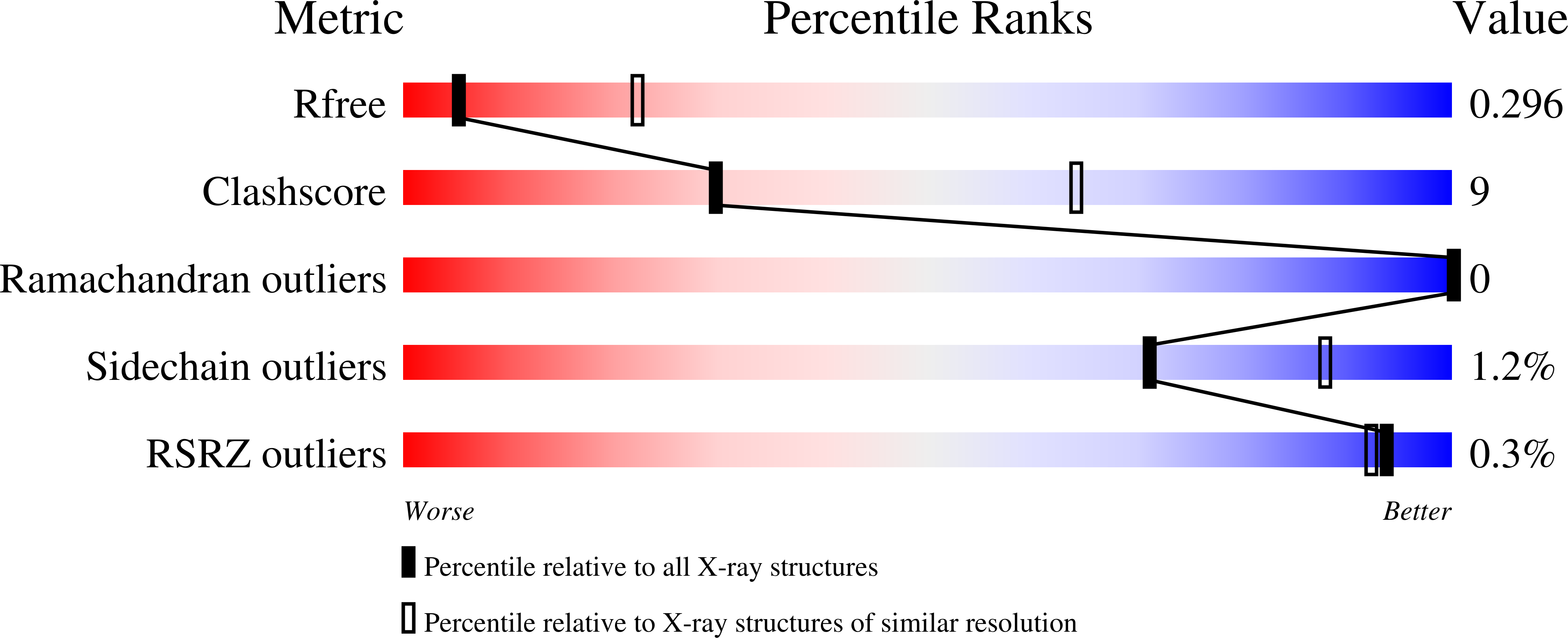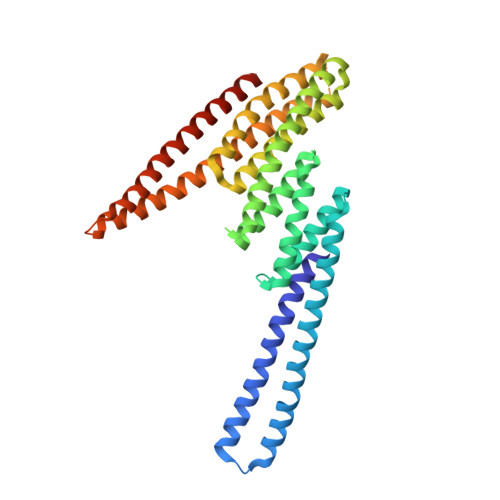Design of multi-scale protein complexes by hierarchical building block fusion.
Hsia, Y., Mout, R., Sheffler, W., Edman, N.I., Vulovic, I., Park, Y.J., Redler, R.L., Bick, M.J., Bera, A.K., Courbet, A., Kang, A., Brunette, T.J., Nattermann, U., Tsai, E., Saleem, A., Chow, C.M., Ekiert, D., Bhabha, G., Veesler, D., Baker, D.(2021) Nat Commun 12: 2294-2294
- PubMed: 33863889
- DOI: https://doi.org/10.1038/s41467-021-22276-z
- Primary Citation of Related Structures:
6XH5, 6XI6, 6XNS, 6XSS, 6XT4 - PubMed Abstract:
A systematic and robust approach to generating complex protein nanomaterials would have broad utility. We develop a hierarchical approach to designing multi-component protein assemblies from two classes of modular building blocks: designed helical repeat proteins (DHRs) and helical bundle oligomers (HBs). We first rigidly fuse DHRs to HBs to generate a large library of oligomeric building blocks. We then generate assemblies with cyclic, dihedral, and point group symmetries from these building blocks using architecture guided rigid helical fusion with new software named WORMS. X-ray crystallography and cryo-electron microscopy characterization show that the hierarchical design approach can accurately generate a wide range of assemblies, including a 43 nm diameter icosahedral nanocage. The computational methods and building block sets described here provide a very general route to de novo designed protein nanomaterials.
Organizational Affiliation:
Department of Biochemistry, University of Washington, Seattle, WA, USA.














